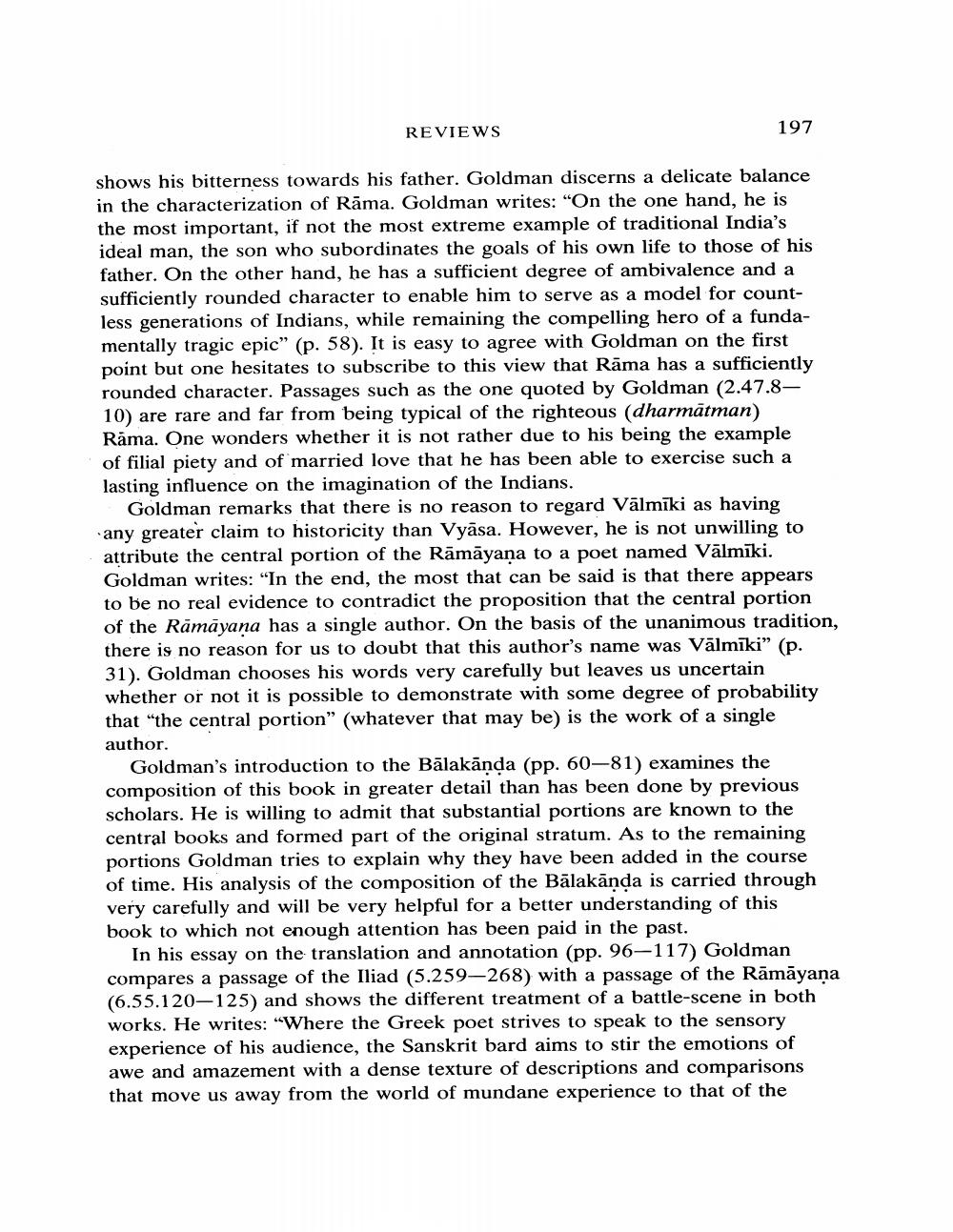Book Title: Reviews Of Diffeent Books Author(s): J W De Jong Publisher: J W De Jong View full book textPage 3
________________ REVIEWS 197 shows his bitterness towards his father. Goldman discerns a delicate balance in the characterization of Rama. Goldman writes: "On the one hand, he is the most important, if not the most extreme example of traditional India's ideal man, the son who subordinates the goals of his own life to those of his father. On the other hand, he has a sufficient degree of ambivalence and a sufficiently rounded character to enable him to serve as a model for countless generations of Indians, while remaining the compelling hero of a fundamentally tragic epic" (p. 58). It is easy to agree with Goldman on the first point but one hesitates to subscribe to this view that Rāma has a sufficiently rounded character. Passages such as the one quoted by Goldman (2.47.810) are rare and far from being typical of the righteous (dharmatman) Rama. One wonders whether it is not rather due to his being the example of filial piety and of married love that he has been able to exercise such a lasting influence on the imagination of the Indians. Goldman remarks that there is no reason to regard Välmīki as having any greater claim to historicity than Vyasa. However, he is not unwilling to attribute the central portion of the Rāmāyaṇa to a poet named Välmiki. Goldman writes: "In the end, the most that can be said is that there appears to be no real evidence to contradict the proposition that the central portion of the Ramayana has a single author. On the basis of the unanimous tradition, there is no reason for us to doubt that this author's name was Vālmīki" (p. 31). Goldman chooses his words very carefully but leaves us uncertain whether or not it is possible to demonstrate with some degree of probability that "the central portion" (whatever that may be) is the work of a single author. Goldman's introduction to the Bälakända (pp. 60-81) examines the composition of this book in greater detail than has been done by previous scholars. He is willing to admit that substantial portions are known to the central books and formed part of the original stratum. As to the remaining portions Goldman tries to explain why they have been added in the course of time. His analysis of the composition of the Bälakāṇḍa is carried through very carefully and will be very helpful for a better understanding of this book to which not enough attention has been paid in the past. In his essay on the translation and annotation (pp. 96-117) Goldman. compares a passage of the Iliad (5.259-268) with a passage of the Rāmāyaṇa (6.55.120-125) and shows the different treatment of a battle-scene in both works. He writes: "Where the Greek poet strives to speak to the sensory experience of his audience, the Sanskrit bard aims to stir the emotions of awe and amazement with a dense texture of descriptions and comparisons that move us away from the world of mundane experience to that of thePage Navigation
1 2 3 4 5 6 7 8 9 10 11 12 13 14 15 16 17 18 19 20 21 22 23 24 25 26 27 28 29 30 31 32 ... 60
